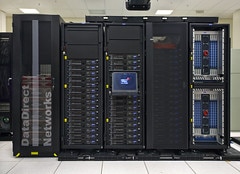Cloud computing is taking the world by storm. Many of the internet’s biggest names, including Google, Microsoft and Amazon are taking advantage of the cloud by offering a large range of services to both enterprises and consumers looking to utilise the great potential and flexibility that it offers. These services include online software-as-a-service (SaaS) products such as CRM platforms and online office suites, comprehensive storage systems and remote data processing.
But how do these services and the cloud in general work? Cloud computing occurs when computer processes and calculations take place remotely. Customers who sign up to cloud services access them online, via either specialised computer programs or in web browsers, where they input the required variables for a task. Vast and powerful remote server farms then take care of the heavy lifting and number crunching.
Book a demo today to see GlobalDots is action.
Optimize cloud costs, control spend, and automate for deeper insights and efficiency.

This has all been made possible thanks to a dramatic increase in internet speeds that we have seen over the past few years. High speed broadband and fibre optic networks, coupled with the immense popularity of content delivery networks and network optimisation technologies have allowed rich, data heavy platforms to be delivered and accessed across the internet as opposed to being delivered via traditional physical means such as DVDs and floppy discs.
Cloud Services
Cloud services are generally split into three different types:
1) Infrastructure-as-a-service (IaaS): This includes the physical server farms and networks, virtual machines, online storage and load balancers.
2) Platform-as-a-service (PaaS): PaaS services include web servers, dev tools, execution runtimes and online databases.
3) Software-as-a-service (SaaS): These applications are amongst the most popular and visible cloud services, being available widely to people on a consumer level as well as enterprise. These services include customer relationship managers (CRM), email, virtual desktops, online games, office suites and communication tools.

Benefits of Cloud Computing
There are several benefits to using the cloud:
1) Performance: Cloud providers invest in the latest, greatest and fastest hardware available, constantly upgrading their systems and keeping a close eye on performance, providing maintenance where necessary. Because their whole business model relies on high performance and always available services, they make sure that they experience the least amount of downtime possible, whilst providing fast access to everyone.
2) Reliability: With large networks of server farms, cloud providers have a robust presence that is always available, even if one server fails. Furthermore, where a service such as cloud storage or backup is being used, several redundant copies of a customer’s files are stored at several different locations, providing unparalleled security against damage or loss. Load balancing and scalability is also easily taken care of thanks to their large server farms and networks.
3) Usability: As cloud providers manage their own systems, very little set up is required from customers. Providers have their own teams of highly trained staff able to deal with any technical problems so that customers can concentrate on their own business and not get bogged down in complicated support issues. Furthermore, remote cloud based software is updated automatically, with no input required from end users, ensuring that they always have access to the latest and safest software versions.
4) Cost effectiveness: Given the nature of the cloud, with large servers taking the strain of complex computations remotely, users don’t need to invest in expensive hardware which needs to be upgraded regularly. The cost is effectively spread across all cloud users. By operating in this way, customers have access to much faster and more capable hardware at a cheaper price than would otherwise be possible.
With such a broad range of services available over the cloud, many different organisations can benefit from leveraging its power. By working remotely and on principles of sharing and the aggregation of processing power and processes, the cloud is providing a unique method for customers who want to access dynamic and high performing hardware and software solutions.






